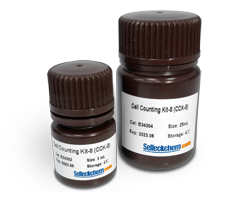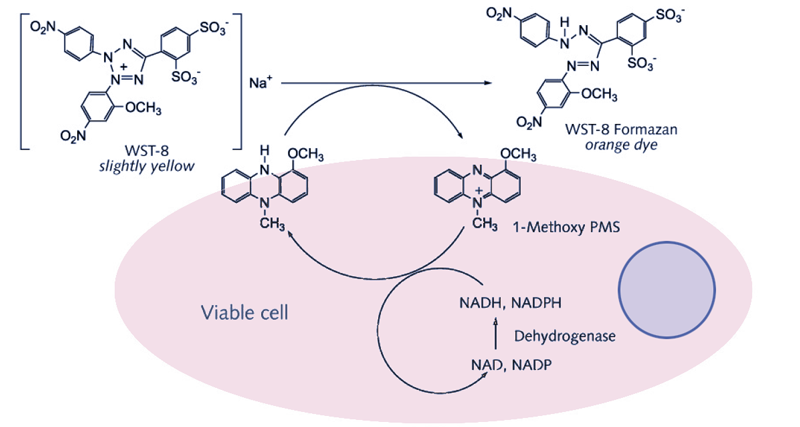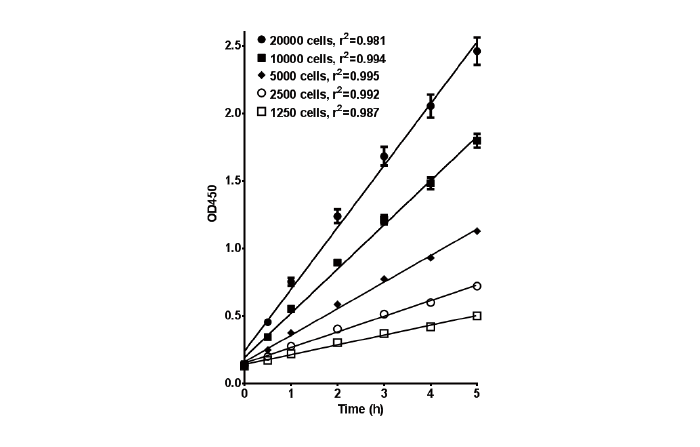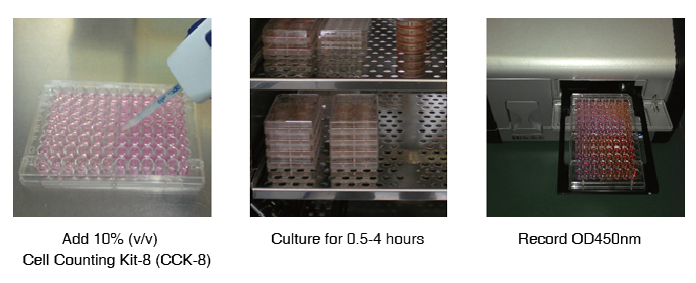
- Bioactive Compounds
- By Signaling Pathways
- PI3K/Akt/mTOR
- Epigenetics
- Methylation
- Immunology & Inflammation
- Protein Tyrosine Kinase
- Angiogenesis
- Apoptosis
- Autophagy
- ER stress & UPR
- JAK/STAT
- MAPK
- Cytoskeletal Signaling
- Cell Cycle
- TGF-beta/Smad
- Compound Libraries
- Popular Compound Libraries
- Customize Library
- Clinical and FDA-approved Related
- Bioactive Compound Libraries
- Inhibitor Related
- Natural Product Related
- Metabolism Related
- Cell Death Related
- By Signaling Pathway
- By Disease
- Anti-infection and Antiviral Related
- Neuronal and Immunology Related
- Fragment and Covalent Related
- FDA-approved Drug Library
- FDA-approved & Passed Phase I Drug Library
- Preclinical/Clinical Compound Library
- Bioactive Compound Library-I
- Bioactive Compound Library-II
- Kinase Inhibitor Library
- Express-Pick Library
- Natural Product Library
- Human Endogenous Metabolite Compound Library
- Alkaloid Compound LibraryNew
- Angiogenesis Related compound Library
- Anti-Aging Compound Library
- Anti-alzheimer Disease Compound Library
- Antibiotics compound Library
- Anti-cancer Compound Library
- Anti-cancer Compound Library-Ⅱ
- Anti-cancer Metabolism Compound Library
- Anti-Cardiovascular Disease Compound Library
- Anti-diabetic Compound Library
- Anti-infection Compound Library
- Antioxidant Compound Library
- Anti-parasitic Compound Library
- Antiviral Compound Library
- Apoptosis Compound Library
- Autophagy Compound Library
- Calcium Channel Blocker LibraryNew
- Cambridge Cancer Compound Library
- Carbohydrate Metabolism Compound LibraryNew
- Cell Cycle compound library
- CNS-Penetrant Compound Library
- Covalent Inhibitor Library
- Cytokine Inhibitor LibraryNew
- Cytoskeletal Signaling Pathway Compound Library
- DNA Damage/DNA Repair compound Library
- Drug-like Compound Library
- Endoplasmic Reticulum Stress Compound Library
- Epigenetics Compound Library
- Exosome Secretion Related Compound LibraryNew
- FDA-approved Anticancer Drug LibraryNew
- Ferroptosis Compound Library
- Flavonoid Compound Library
- Fragment Library
- Glutamine Metabolism Compound Library
- Glycolysis Compound Library
- GPCR Compound Library
- Gut Microbial Metabolite Library
- HIF-1 Signaling Pathway Compound Library
- Highly Selective Inhibitor Library
- Histone modification compound library
- HTS Library for Drug Discovery
- Human Hormone Related Compound LibraryNew
- Human Transcription Factor Compound LibraryNew
- Immunology/Inflammation Compound Library
- Inhibitor Library
- Ion Channel Ligand Library
- JAK/STAT compound library
- Lipid Metabolism Compound LibraryNew
- Macrocyclic Compound Library
- MAPK Inhibitor Library
- Medicine Food Homology Compound Library
- Metabolism Compound Library
- Methylation Compound Library
- Mouse Metabolite Compound LibraryNew
- Natural Organic Compound Library
- Neuronal Signaling Compound Library
- NF-κB Signaling Compound Library
- Nucleoside Analogue Library
- Obesity Compound Library
- Oxidative Stress Compound LibraryNew
- Plant Extract Library
- Phenotypic Screening Library
- PI3K/Akt Inhibitor Library
- Protease Inhibitor Library
- Protein-protein Interaction Inhibitor Library
- Pyroptosis Compound Library
- Small Molecule Immuno-Oncology Compound Library
- Mitochondria-Targeted Compound LibraryNew
- Stem Cell Differentiation Compound LibraryNew
- Stem Cell Signaling Compound Library
- Natural Phenol Compound LibraryNew
- Natural Terpenoid Compound LibraryNew
- TGF-beta/Smad compound library
- Traditional Chinese Medicine Library
- Tyrosine Kinase Inhibitor Library
- Ubiquitination Compound Library
-
Cherry Picking
You can personalize your library with chemicals from within Selleck's inventory. Build the right library for your research endeavors by choosing from compounds in all of our available libraries.
Please contact us at info@selleckchem.com to customize your library.
You could select:
- Antibodies
- Bioreagents
- qPCR
- 2x SYBR Green qPCR Master Mix
- 2x SYBR Green qPCR Master Mix(Low ROX)
- 2x SYBR Green qPCR Master Mix(High ROX)
- Protein Assay
- Protein A/G Magnetic Beads for IP
- Anti-DYKDDDDK Tag magnetic beads
- Anti-DYKDDDDK Tag Affinity Gel
- Anti-Myc magnetic beads
- Anti-HA magnetic beads
- Poly DYKDDDDK Tag Peptide lyophilized powder
- Protease Inhibitor Cocktail
- Protease Inhibitor Cocktail (EDTA-Free, 100X in DMSO)
- Phosphatase Inhibitor Cocktail (2 Tubes, 100X)
- Cell Biology
- Cell Counting Kit-8 (CCK-8)
- Animal Experiment
- Mouse Direct PCR Kit (For Genotyping)
- New Products
- Contact Us
research use only
Cell Counting Kit-8 (CCK-8)
The Selleck Cell Counting Kit-8 (CCK-8) is a ready-to-use one-bottle solution which offers a simple, rapid, reliable and sensitive measurement of cell viability and cytotoxicity of various chemicals.

Selleck's Has Been Cited by 626 Publications
Advantages
| Reagents | CCK-8 (WST®-8) | WST-1 | XTT/MTS | MTT |
|---|---|---|---|---|
| Property | 1-bottle solution | 1-bottle solution | 2-bottle solution | powder |
| Preparation | Ready-to-use | Ready-to-use | Mix before use | Dissolve before use |
| Reading | 430-490 nm | 420-480 nm | 420-480 nm | 560-600 nm |
| Formazan aqueous solubility | +++++ | +++ | ++ | - |
| Sensitivity | +++++ | +++ | +++ | + |
| Incubation time | + | + | +++ | +++++ |
| Toxicity | + | + | +++ | +++++ |
| Reagent Stability | +++++ | +++ | + | +++ |
| HTS adaption | +++++ | +++ | +++ | + |
| Convenience | +++++ | +++ | +++ | + |
Price Comparison
Description
The Selleck Cell Counting Kit-8 (CCK-8) is a ready-to-use one-bottle solution which offers a simple, rapid, reliable and sensitive measurement of cell viability and cytotoxicity of various chemicals. Moreover, Cell Counting Kit-8 (CCK-8) is very safe, fast, nonradioactive and cost-effective compared to other conventional methods such as [3H]-thymidine incorporation assay.
Cell Counting Kit-8 (CCK-8) is a redox indicator that utilizes the highly water-soluble tetrazolium salt WST®-8 [2-(2-methoxy-4-nitrophenyl)-3-(4-nitrophenyl)-5-(2,4-disulfophenyl)-2H-tetrazolium, monosodium salt] to produce a water-soluble formazan dye upon reduction by cellular dehydrogenases in the presence of an electron carrier 1-Methoxy PMS in the culture medium (Figure 1). The amount of the formazan dye generated by the activity of dehydrogenases in cells is directly proportional to the number of living cells (Figure 2). The detection sensitivity of Cell Counting Kit-8 (CCK-8) is higher than other tetrazolium salts such as MTT, XTT, MTS or WST-1.

Figure 1: Working mechanisms of Cell Counting Kit-8 (CCK-8).

Figure 2: Cell number vs OD value using Cell Counting Kit-8 (CCK-8). K562 and Hela cells were seeded into 96-well plate at different density in 100 μl culture medium in triplicate respectively. 16 hours later, 10 μl/well Cell Counting Kit-8 (CCK-8) was added, allowing to continuously culture for indicated duration in cell culture incubator. The absorbance at 450 nm were then measured in a microplate reader. Medium only wells were served as blank control. Note the great linear relationship between cell number per well versus OD450 values at all incubation time.

Figure 3: Time dependent color development using Cell Counting Kit-8 (CCK-8). HEK293 cells were seeded into 96-well plate at different concentrations in 100 μl culture medium in triplicate. 16 hours later, 10 μl/well Cell Counting Kit-8 (CCK-8) was added, allowing cells to continuously culture for indicated duration in cell culture incubator. Absorbance at 450 nm was then measured in a microplate reader. Note the highly linear relationship of color development versus incubation time at all cell concentrations.
Storage (From the date of receipt)
The Cell Counting Kit-8 (CCK-8) is stable for 6 months at room temperature, 2 years at 0-5°C with protection from light. For long term storage, store at -20°C and below.
Protocol
Required Materials (not included)
• microplate reader (450 nm filter)
• 10 μl, 100-200 μl and multi-channel pipettes.
• 1 % SDS (optional).
Experiment Procedure
1) Inoculate cells in a cell culture flask or dish, and allow cells to adhere or grow for approximately 4–24 hours before proceeding with the assay.
2) Add 1/10 volume of Cell Counting Kit-8 (CCK-8) directly to cells in culture medium. Mix thoroughly to achieve a homogenous solution by lightly tapping the outside of the plate several times while avoiding bubbles. For 96-well plate, add 10 µl Cell Counting Kit-8 (CCK-8) per 100 µl culture medium.
3) Incubate in a cell culture incubator for 0.5 to 4 hours at 37°C until the color turns orange. Over incubation will give false results.
Note: Sensitivity of detection increases with longer incubation times. For samples with fewer cells, use a longer incubation time of up to 24 hours.
4) Record results using microplate reader to measure the absorbance of Cell Counting Kit-8 (CCK-8) at 450 nm. Recommended OD values range between 0.8-1.5, however values between 0.5-2.5 are acceptable.
Note: Slight spontaneous absorbance around 450 nm occurs in culture medium incubated with Cell Counting Kit-8 (CCK-8). This background absorbance depends on the culture medium, pH, incubation time and length of exposure to light. Typical background absorbance after 2 hours incubation is 0.1 - 0.2 absorbance units. To correct for this, prepare one or more control wells without cells, and subtract the average absorbance of the control wells from that of the other wells.
5) Optional: Add 10 μl of 1 % SDS (dissolve 0.1 g SDS with PBS buffer to prepare 10 ml solution) directly to 100 μl of cells to stop the reaction. Signals can be read within 3 days without affecting the absorbance values.
6) Calculation of cell viability:
Cell viability (%) = [A (Drug+) – A (Black)] / [A (Drug-) – A (Black)] x 100%
A (Drug+) : OD value of wells with cells, CCK-8 and drugs;
A (Drug-) : OD value of wells with cells, CCK-8, but without drugs;
A (Black): OD value of wells with culture medium and CCK-8, but without cells.
Brief Summary of the protocol

Applications
1) Cell proliferation determinations—the Selleck Cell Counting Kit-8 (CCK-8) is water soluble, stable in culture, and non-toxic.
2) Cell viability assays—metabolic activity and dye generation changes in proportion to altered viability.
3) Cytokine assays—measure cytokine-induced proliferation. Cells can be recovered and expanded at the end of the study if desired.
4) Cytotoxicity assays—Cells death from cytotoxic chemicals has no effects on color development, only living cells convert the reagent into a colorimetric indicator. The reagent itself has negligible toxicity, and is generally safe for cells.
Note
1. Cell Counting Kit-8 (CCK-8) is ready-to-use solution. Mix the reagent to ensure a homogenous solution before use.
2. If you plan to use longer incubation time (overnight), be sure to maintain sterile conditions during reagent addition and incubation to avoid microbial contaminants. Contaminated cultures will yield erroneous results as microbial contaminants also reduce the Cell Counting Kit-8 (CCK-8).
3. Be sure to include appropriate assay controls. To minimize experimental errors, we recommend making measurements from a minimum of 3–8 replicates of experimental and medium only control.
4. This product is for R&D use only, not for medical, household, or other uses.
Trouble Shooting
| Problems | Potential Cause(s) | Suggestion(s) |
|---|---|---|
| OD values are too high (>2.5) | Too many cells in well. | Reduce the cell count. Pre-determination of the relationship between cell number and O.D readings is recommended. |
| Incubation time is too long. | Shorten the incubation time. | |
| OD values are too low (<0.3) | Too few cells per well. | Increase the cell count. Pre-determination of the relationship between cell number and O.D readings is recommended. |
| Cell viability is too low to be tested by Cell Counting Kit-8 (CCK-8). | Increase cell number per well and incubation time. If it does not work again, choose other more sensitive kits. | |
| Incubation time is too short. | Increase the incubation time, up to 24 h is acceptable. | |
| Wrong wave length of reading is used. | Use the optical filter or set the monochrometer between 450 nm and 490 nm to read absorbance. | |
| Color is developed by dead cells. | Test compounds may reduce WST®-8 | If color development occurs by mixing and incubating of Cell Counting Kit-8 (CCK-8) and test compounds, exchange the culture media and then add Cell Counting Kit-8 (CCK-8). |
| Cell lysate may reduce WST®-8. | Exchange fresh culture media and then add Cell Counting Kit-8 (CCK-8). | |
| Data varies between wells | Wells were not thoroughly mixed after adding Cell Counting Kit-8 (CCK-8). | Exchange fresh culture media and then add Cell Counting Kit-8 (CCK-8), mix thoroughly by lightly tap the outside of the well and incubate again. |
| Cell Counting Kit-8 (CCK-8) is not well mixed after long term storage or was exposed to freezing and thawing. | Mix Cell Counting Kit-8 (CCK-8) thoroughly, exchange fresh culture media and the re-add Cell Counting Kit-8 (CCK-8). | |
| Bubbles are present in wells. | Pierce bubbles with a toothpick. | |
| Cell counts are varied among wells. | Re-seed cells and repeat the whole assay. | |
| The edge effect of a plate. | Do not use the outer-most wells for the assay. Only add media to these wells. | |
| The absorbance of the well with a test compound is higher than that of the negative control. | The compound promotes cell viability even though it is toxic substance. | Cell Counting Kit-8 (CCK-8) still works bona fide in such situation. Change other assay kit with different principles. |
| High background (blank) absorbent values | The reagent may be breaking down due to multiple freeze/thaw cycles. | Be sure to store Cell Counting Kit-8 (CCK-8) at 0-5 ºC in a dark place. Do not use expired products. |
Tech Support
If you have any other enquiries, please leave a message.
* Indicates a Required Field






































